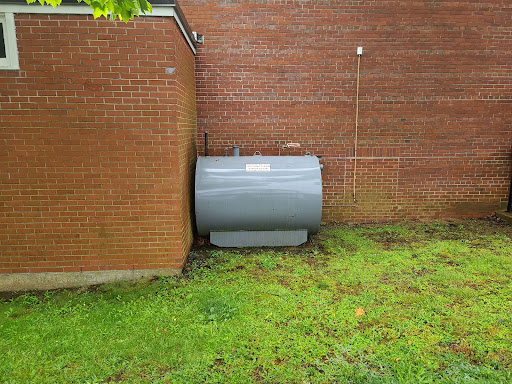Planning on installing a new outdoor oil tank and aren’t sure where it should go? Then the best way to find a proper location for new heating oil tanks is to learn where they shouldn’t go. If you want to learn where not to install an oil tank, here are five factors you’ll need to consider.
In Front of Building Entrances
Placing an aboveground oil tank in front of building entrances, including windows, can be a major safety hazard. If someone needs to evacuate quickly, the heating oil tank can block the exit, creating a dangerous obstruction.
Additionally, outdoor oil tanks in these areas may be more vulnerable to accidental damage. As such, you must find a safe location that’s out of the way.
Out in the Open
One advantage of installing an indoor tank is that it’s protected from the elements. Of course, if you want to install one outside, then you’ll still need to take this issue into account — outdoor tanks should not be left out in the open, as they are highly exposed to weather elements. A new oil tank placed without protection may experience faster wear due to rain, snow, or UV exposure, which can weaken the tank’s exterior.
Choosing a safer, more sheltered location for your outdoor tank will help shield it from those problems. However, while it’s only natural to want to place oil tanks in a position where they’ll be away from the elements, you can’t place them just anywhere. If it’s installed underneath a house eave, then it can be hit by falling icicles, snow, and other debris.
Near Traffic and Vehicles
Installing a heating oil tank near vehicles presents a high risk of collision or damage. The proximity of the aboveground tank to parked or moving cars increases the chance of an accidental impact, which can puncture the tank and disrupt fuel lines.
Aboveground oil tanks that are accidentally hit could result in fuel oil spills, creating a fire hazard or costly environmental cleanups. That’s why when placing your outside oil tank, keeping it away from any areas where vehicles regularly pass through or park is a must.
Sloped, Insecure Ground
An oil tank should never be placed on sloped or insecure ground. Uneven surfaces can cause the tank to shift or even tip over, leading to dangerous leaks or damage. Outdoor tanks need a stable, flat foundation like a concrete pad to support their weight.
Without a solid base, your new tank could collapse and cause a serious problem. As a result, you need to install your new heating oil tank on firm, level ground to maintain its stability and long-term safety.
Close to a Water Source
Positioning an aboveground tank near a water source is highly risky due to the potential contamination of the water supply. In the event of a leak, the fuel oil can seep into nearby lakes, rivers, or wells and become a severe environmental and health risk.
This means that outdoor oil tanks should be located far from any natural water features to prevent pollutants from entering the ecosystem. Through proper placement of your aboveground tank, you can protect both your home heating oil system and the surrounding ecosystem.
If You’re Planning an Oil Tank Installation, Call Professional Tank & Environmental for Professional Help
At Professional Tank & Environmental, our experts have experience installing underground oil tanks, aboveground tanks, and indoor tanks, meaning you can count on us whenever you need a safe installation. In addition to helping homeowners install new heating oil tanks, we also specialize in removals, emergency services, and soil remediation services whenever you’ve got a serious problem.
Reach out today to learn more and to schedule one of our services!


